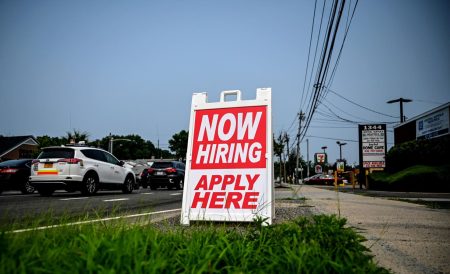The 2026 revenue bill, secretly passed by the House, would cut taxes by an estimated $2,900 for average households, according to a new analysis from the Tax Policy Center. About 84% of households would receive a tax cut, falling as low as $160 at the lowest incomes. While overall, the bill would save the federal government $3.9 trillion by 2034, the timing of tax cuts could have a significant impact on individual households and income groups.
The regressive marginal tax rates mean that low-income households would benefit disproportionately from the cuts. Taxow/managers of households making $35,000 or less would see a $160 cut, or about 1% of their after-tax income. For middle-income households, the benefits would increase, with an average of $1,850 cut, or 2.4% of their after-tax income. Those with incomes ranging from $460,000 to $1.1 million would benefit the most—$21,000, or 4.3% of after-tax income—and those making $5 million or more would see a $300,000 cut, or 3.3% of after-tax income. Households in the top 5% would receive nearly $60% of the tax cuts, while those in the middle income would benefit by about 13%, and lower-income households would only see a 1% reduction.
The House bill would extend many provisions from the 2017 Tax Cuts and Jobs Act, such as higher standard deductions and child tax credits, while also providing some benefits to pass-through businesses, like partnerships and sole proprietorships. The proposed “One Big Beautiful Bill Act (OBBBA)”—a law extending the House bill—would make significant changes, such as extending the standard deduction by up to $4,000 for older individuals and making the deduction more permanent for those aged 65 and older. However, the bill would also cap itemized deductions for high-income earners, reduce tax rates on older individuals, and cap taxes on university endowments, among other provisions.
Mostly, the House bill would preserve many of the individual tax cuts and deductions from the 2017 CTAs, such as the higher standard deduction for filers age 65 and above. It would also provide temporary relief to readers of Trump’s书LET, offering tax-free oases for filing in 2024, and extending some business tax benefits to employees of large businesses. The modified version of the TPC analysis would reflect these changes.
For individuals making less than $35,000, the cuts would be modest, but for middle-income earners, those making $67,000 to $119,000 would benefit the most. Those with the lowest incomes in the top bracket, making between $460,000 and $1.1 million, would see a substantial tax cut, while the top 5% would benefit the most, with their incomes ranging from $200,000 to $400,000.
Depending on circumstances, the impact of the bill could be drastically different. For example, individuals in low-income brackets might lose a modest tax reduction, while middle-income earners might see a significant increase in their tax savings. Families with children would also benefit greatly, as their child tax credits would reduce their taxable income, potentially providing more relief than they would otherwise receive. However, the high rates of incomeWanting might be motivo for some people to fight back against the cuts, especially if they believe the cuts are proportionate. Overall, the bill would create a ripple effect, affecting not only their own tax bills but also their personal and family tax benefits.
The Senate likely wants to tweak the law in ways that preserve the most critical provisions, such as large decreases in tax rates for older individuals, larger standard deductions, and expanded tax benefits for businesses. However, the major tax changes in the House bill are likely to endure during teaspoons and possibly win on the American people side, especially given which I think are likely to win in the polls. The House provisions, such as the expanded Alternative Minimum Tax and reduced deductions for large businesses, are likely to be theContainer for voters to pick, while the Senate would focus mainly on the provisions that are broadly accepted, such as tax cuts for low-income households and itemized deductions. The major tax impacts, though, remain largely unchanged, as they are already putting a dent in the federal budget and could only get more thorough in their effects.










